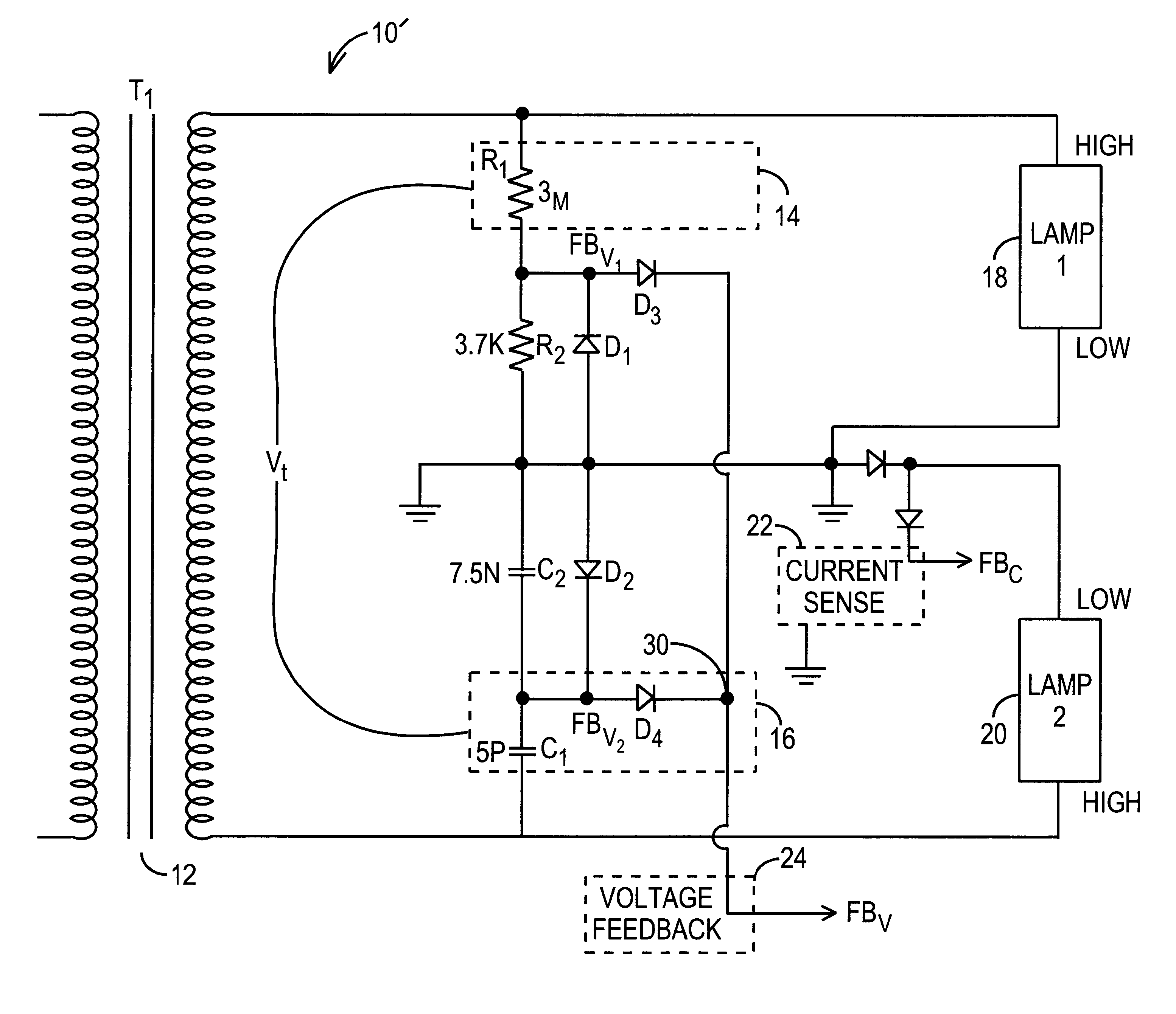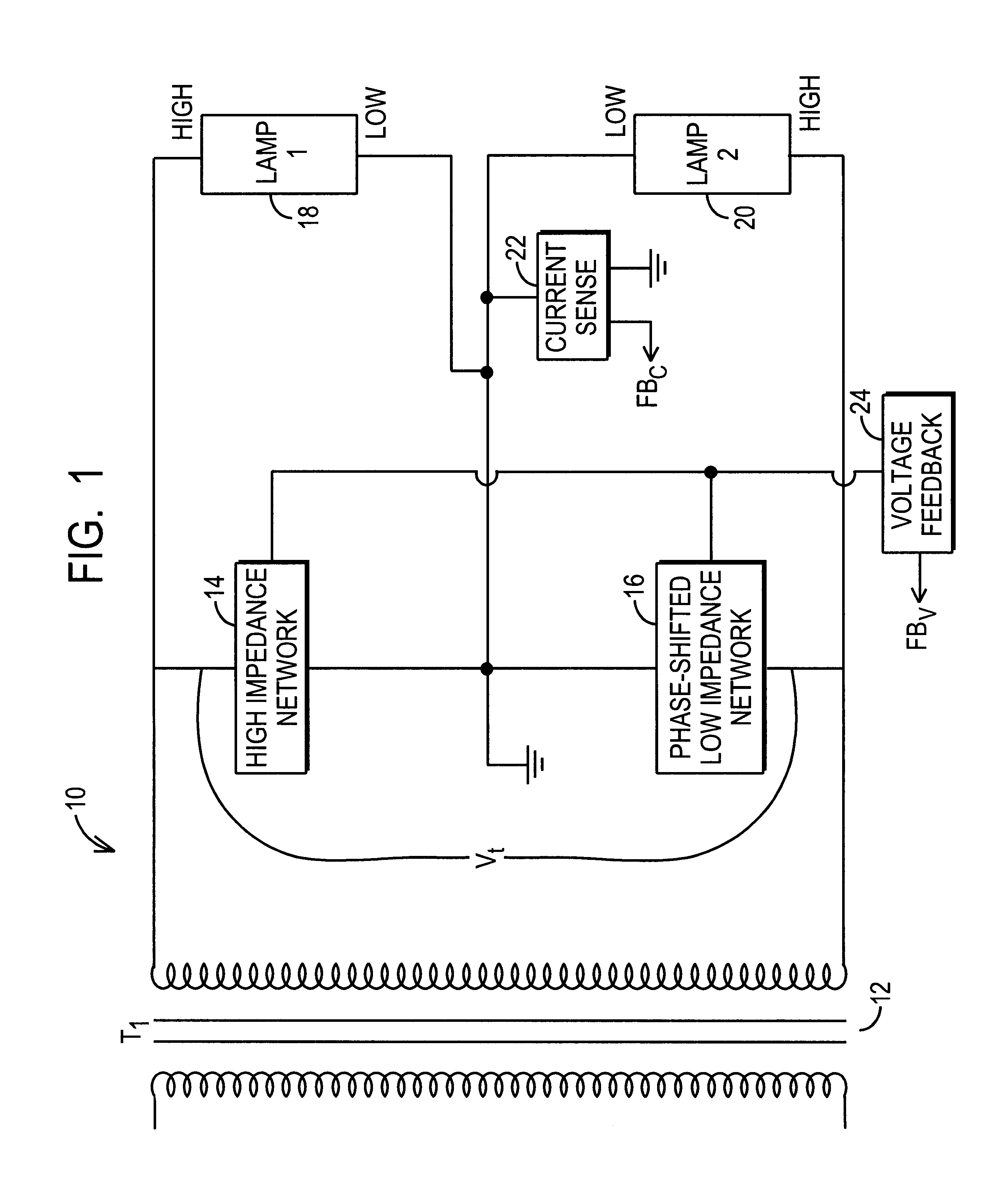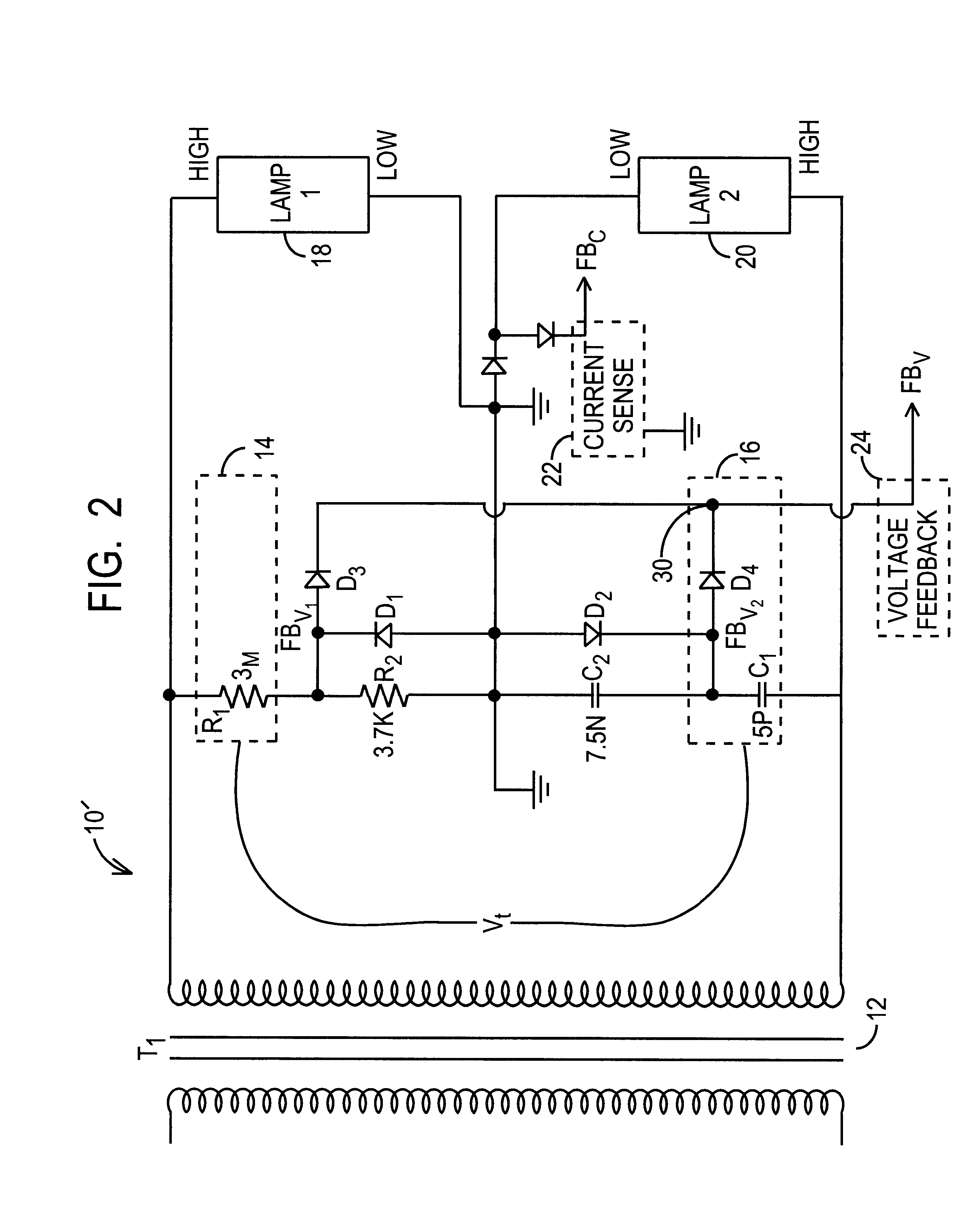Lamp driving topology
a topology and driving technology, applied in the field of multiple load driving systems, can solve problems such as difficult current control in this topology
- Summary
- Abstract
- Description
- Claims
- Application Information
AI Technical Summary
Benefits of technology
Problems solved by technology
Method used
Image
Examples
Embodiment Construction
FIG. 1. is a block diagram of one exemplary load driving system 10 according to the present invention. More specifically, the system 10 is an exemplary lamp driving system. The loads in this exemplary embodiment comprise two lamps, Lamp1 and Lamp2, connected in series, however the present invention is to be broadly construed to cover any particular load. The transformer 12 delivers a stepped-up power source for the loads, Lamp1 and Lamp2. In the following description, the transformer will be generically referred as a power source, and should be broadly construed as such. Those skilled in the art will recognize that conventional inverter topologies may be used to drive the primary side of the transformer 12. Such inverter topologies include push-pull, Royer, half bridge, full bridge, etc., and all such inverters may be used with the lamp driving system 10 of the present invention. As an overview, the system 10 depicted herein permits two lamps to be connected in series without requir...
PUM
 Login to View More
Login to View More Abstract
Description
Claims
Application Information
 Login to View More
Login to View More - R&D
- Intellectual Property
- Life Sciences
- Materials
- Tech Scout
- Unparalleled Data Quality
- Higher Quality Content
- 60% Fewer Hallucinations
Browse by: Latest US Patents, China's latest patents, Technical Efficacy Thesaurus, Application Domain, Technology Topic, Popular Technical Reports.
© 2025 PatSnap. All rights reserved.Legal|Privacy policy|Modern Slavery Act Transparency Statement|Sitemap|About US| Contact US: help@patsnap.com



